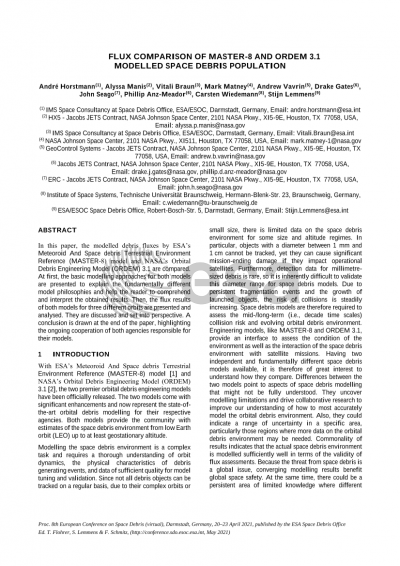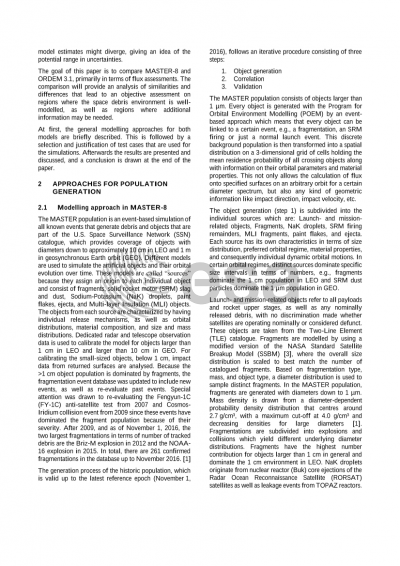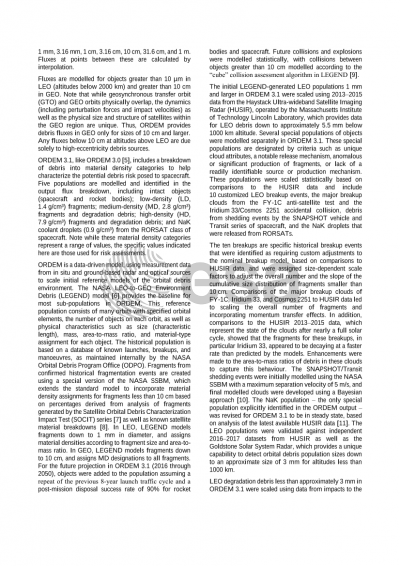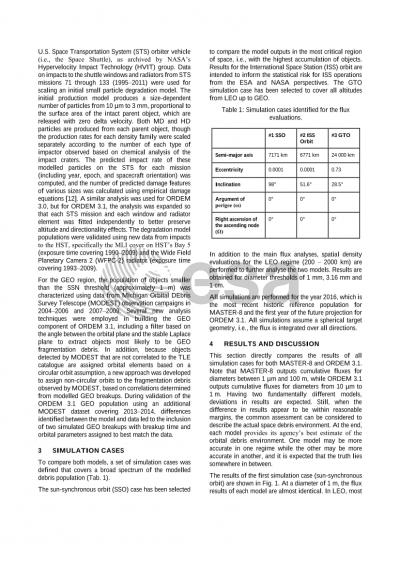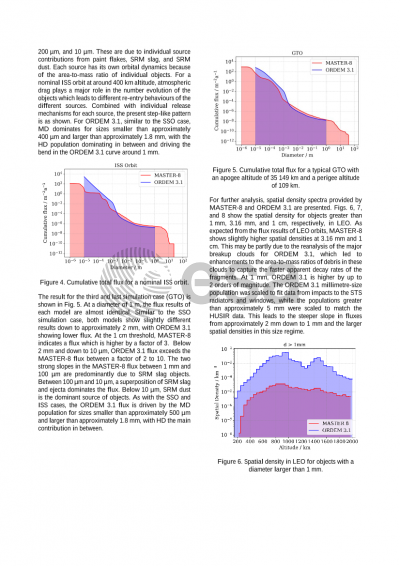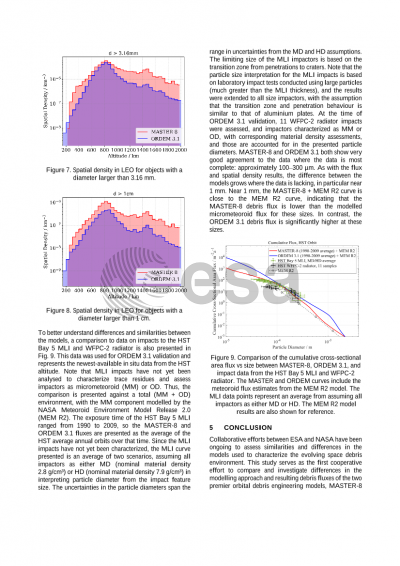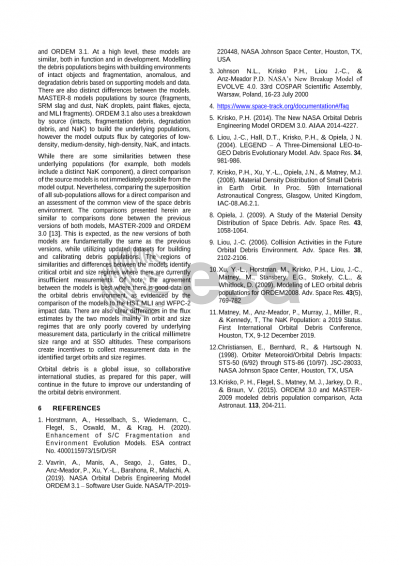Document details

Abstract
With ESA’s Meteoroid And Space debris Terrestrial Environment Reference (MASTER-8) model and NASA’s Orbital Debris Engineering Model (ORDEM) 3.1, the two premier orbital debris engineering models have been officially released. The two models come with significant enhancements and now represent state-of-the-art orbital debris modelling for their respective agencies. Both models provide the community with estimates of the space debris environment from low Earth orbit (LEO) up to at least geostationary altitude.
The MASTER population is an event-based simulation of all known events that generate debris and objects that are part of the U.S. Space Surveillance Network (SSN) catalog, which provides coverage of objects with diameters down to approximately 10 cm in LEO and 1 m in geosynchronous Earth orbit (GEO). Different models are used to simulate the artificial objects and their orbit evolution over time. These models are called “sources” since they assign an origin to each individual object and consist of fragments, solid rocket motor (SRM) remainders, sodium-potassium (NaK) droplets, paintflakes, ejecta, and multi-layer insulation (MLI) fragments. The objects from each source are characterized by having individual release mechanisms, as well as orbital distributions, material composition, size, and mass distributions. Dedicated radar and telescope observation data is used to calibrate the model for objects larger than 1 cm in LEO and larger than 10 cm in GEO. For calibrating the small-sized objects, below 1 cm, impact data from returned surfaces are analyzed. Because the >1 cm object population is dominated by fragments, the fragmentation event database was updated to include new events, as well as re-evaluate past events. Special attention was drawn to re-evaluating the Fengyun-1C anti-satellite test from 2007 and Cosmos-Iridium collision event from 2009 since these events shape the fragment population because of their severity. After 2009, the two largest fragmentations in terms of number of tracked debris are the Briz-M explosion in 2012 and the NOAA-16 explosion in 2015. In total, there are 261 confirmed fragmentations in the database up to November 2016.
The baseline population for ORDEM 3.1 is based on the U.S. SSN catalog, and observational datasets from radar, in situ, and optical sources provide a foundation from which the model populations are statistically extrapolated to smaller size regions. These regions are not well-covered by the SSN catalog yet may pose the greatest threat to operational spacecraft. The NASA Standard Satellite Breakup Model is used to generate fragments greater than 1 mm from collisions and explosions, and these fragment populations are scaled using ground-based radar data. Specific major debris-producing events, including the Fengyun-1C, Iridium 33, and Cosmos 2251 debris clouds, and unique populations, such as NaK droplets, were re-examined, modelled, and added to the ORDEM environment separately. Optical measurement data is used to model the GEO population down to 10 cm. The debris environment is propagated using NASA’s LEO-to-GEO Environment Debris model, and future explosions of intact objects and collisions involving objects greater than 10 cm are assessed statistically. The environment from a few millimetres down to 10 µm is modelled using a special degradation model where small particles are generated from intact spacecraft and rocket bodies, then the populations are scaled to fit in situ cratering data from Space Shuttle returned surfaces. Fragments smaller than 10 cm are differentiated based on material density categories, i.e., high-, medium-, and low-density, to better characterize the potential debris risk posed to upper stages and spacecraft.
This paper will discuss the MASTER and ORDEM approaches for modelling populations and compare fluxes for specific orbits, including sun-synchronous, ISS-altitude, geosynchronous transfer, and GEO. In the end, a conclusion is drawn towards the importance of having multiple fundamentally different, yet validated, models to estimate the space debris population.
Preview
